Visitor guide
Fort Malden National Historic Site
Download the visitor guide in Deutsch, Español, 简体中文, Italiano, العربية, or فارسی below!
(PDF, 3.4 Mb)
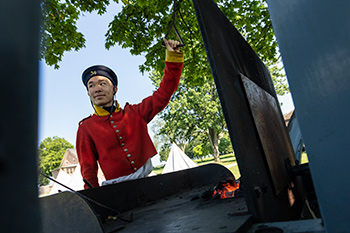
Fort Malden National Historic Site opens a fascinating doorway into Canada’s early military history as the location of an historic meeting between Major General Sir Isaac Brock and Shawnee Chief Tecumseh.
The fort served as the British stronghold on the Detroit frontier during the War of 1812 and the Rebellions of 1837-38. It was also the site of the longest American occupation on Canadian soil.
Today, a unique and enjoyable experience awaits when you enter Fort Malden! Whether you are looking to take in the beautiful scenery along the Detroit River or seeking an authentic experience of the early 1800’s, we have something for everyone.
Fort Malden walking tour
Points of interest
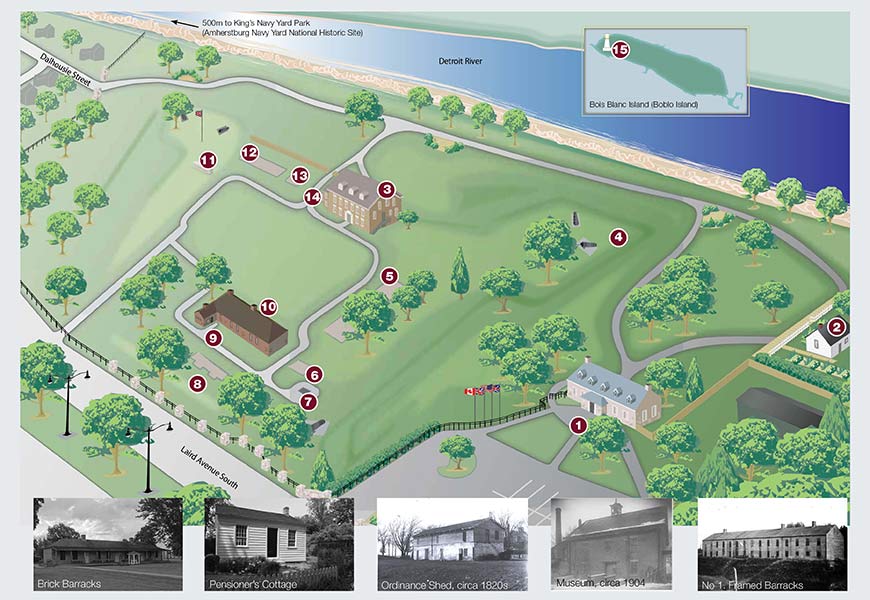
-
Visitor Centre, 1939
Constructed in “old French chateau” style, this building was the original Fort Malden museum when the fort became a National Historic Park in 1939. -
Military Pensioner’s Cottage, circa 1851 (Restoration)
After the regulars left the fort, they were replaced by enrolled pensioners. These men and their families were settled on the military reserve around the fort, where 86 cottages were constructed. -
Museum, circa 1861
Originally a laundry and baking facility for the insane asylum established in 1859. After the asylum closed, the structure became a planing mill and was eventually converted into a private family residence in 1918. Acquired in 1946, the building now acts as the interpretive centre, containing Fort Malden’s exhibits. -
Earthworks, 1813 & 1838-40 (Remnants)
The raised hilltop defencive structure, or bastion, located on the fort’s north-west corner, was constructed by American forces when they seized control of the fort in 1813. New ditches were dug and a wooden palisade was installed at the bottom of the ditch. After the War of 1812, a time of peace ensued and the defenses fell into disrepair. However, the fort was reinforced in 1838-1840 and the earthworks were rebuilt. -
No 1. Framed Barracks, 1839 (Foundation Outline)
A two-story, wooden-frame barracks was built here to help house the expanded Rebellion garrison. Together with a similar structure built within the Fort called No 2. Framed Barracks, were meant to house 400 soldiers and their dependents. The barracks survived until the early 1900’s when it was divided and rebuilt near the fort as three private residences. -
Brick Cookhouse, circa 1820 (Foundation Outline)
The cookhouse provided facilities for the preparation of daily rations and was separate from the sleeping quarters as a fire safety precaution. Allowed to fall into disrepair, the cookhouse was demolished in 1853. -
Cesspit, circa 1820s (Excavation)
This was a junction for the fort’s draining system. A brick drain from the privies can be seen at the bottom of the pit. From here, waste waster was carried through the fort’s north wall and into an open drain at the bottom of the north ditch. -
Privies, 1820 (Excavation)
The wooden frame privies (latrines) provided sanitary facilities for the soldiers and their families. The weather boarded structure was surrounded by a wooden fence that obscured the outdoor urinals. Relocated in 1841, all that remains is the excavated stone foundation. -
Hospital Kitchen, circa 1842
Constructed sometime after 1842, this addition housed the hospital kitchen. Of note are two large boilers used in preparing the special diets administered to the patients. -
Brick Barracks, circa 1820 (Restoration)
The last remaining building of those constructed after the reoccupation of Fort Malden by the British. This single story barracks has three rooms and was designed to accommodate 66 soldiers. In the 1840s, the barracks was converted into the fort’s hospital and a kitchen was added to its southeast corner. -
Ordnance Shed, circa 1820s (Remnants)
Originally erected as a gun shed, this structure was gradually expanded and upgraded. It held stores, supplies and ordnance (cannon and their related equipment). The shed was used for a number of purposes before being demolished early in the 20th century. Remnants of the west-end wall are still visible. -
Officer’s Brick Barracks, 1839 (Foundation Outline)
Constructed during the Rebellion, the officers’ barracks was a two-story building with eight rooms on the ground floor and four above. Unlike the troops, each officer had his own room with a fireplace. The second floor provided living quarters for the officers’ servants. -
Brick Officer’s Guardroom and Staff Sergeants’ Quarters 1839 (Foundation Outline)
Located just south of the fort’s gate, this one-story brick building offered quarters for the duty officer and for the staff sergeants with storage space in the attic. -
Brick Guardhouse, circa 1821 (Foundation Outline)
This area housed a framed brick building containing two cells, a room for on-duty soldiers and a cellar used for solitary confinement. The guardhouse was demolished in the 1850’s and its outline is mostly obscured by the asylum-era cookhouse and laundry. -
Bois Blanc Island Lighthouse National Historic Site
The lighthouse, constructed in 1836, played an important role in navigation of the Detroit River. The island itself was strategically important in defence of Fort Malden in 1837-38 during a period of border raids from the United States by Canadian rebels.
During your visit to Fort Malden
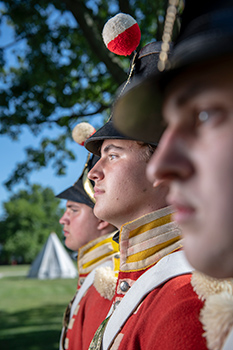
Explore all of the sights, as you stroll through our grounds. Welcoming staff, a renowned interpretation centre, and historic landscape are all available to you as you take in Fort Malden’s rich and colourful history.
Home to many unique and original artifacts, including the only known surviving Republic of Canada flag. Interactive activities for kids, an orientation film and a gift shop will complete your visit.
Walk through the gates of the fort and learn how soldiers and their families lived during the early 1800’s. The interior of the fort includes an original 1820 barracks, with recreations of an officer’s quarters, soldiers’ living quarters and a cookhouse.
A few steps away from Fort Malden
Extend your stroll beyond Fort Malden to the King’s Navy Yard Park, which is home to the Commissariat building, constructed in 1831 to serve as the office responsible for purchasing and storing goods. Look across the river and enjoy panoramic views of Bois Blanc Island (Boblo Island).
Did you know...
- The first military post at this location, constructed in 1796, was named Fort Amherstburg.
- Fort Amherstburg was both the first and last site to see action in the War of 1812.
- Nothing remains of the first fortification built here because it was burned by the British in 1813.
- Fort Malden was the first site where a third meal was provided to British Army soldiers.
- Fort Malden was used as a provincial asylum after the military abandoned it. Ask us more about the site’s post-military past.
Other languages
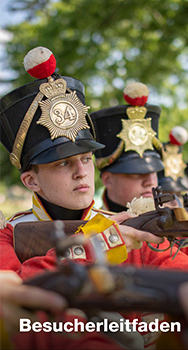

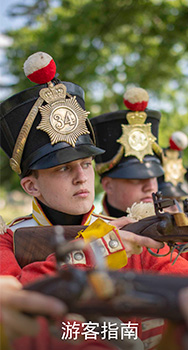
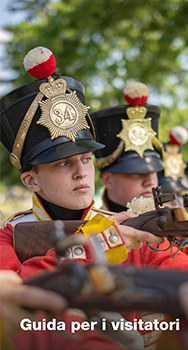
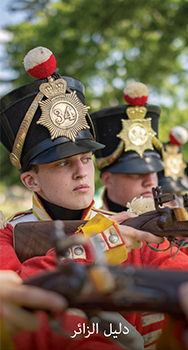
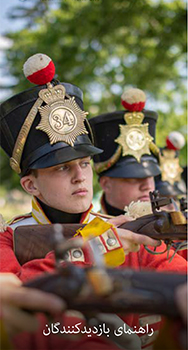
- Date modified :